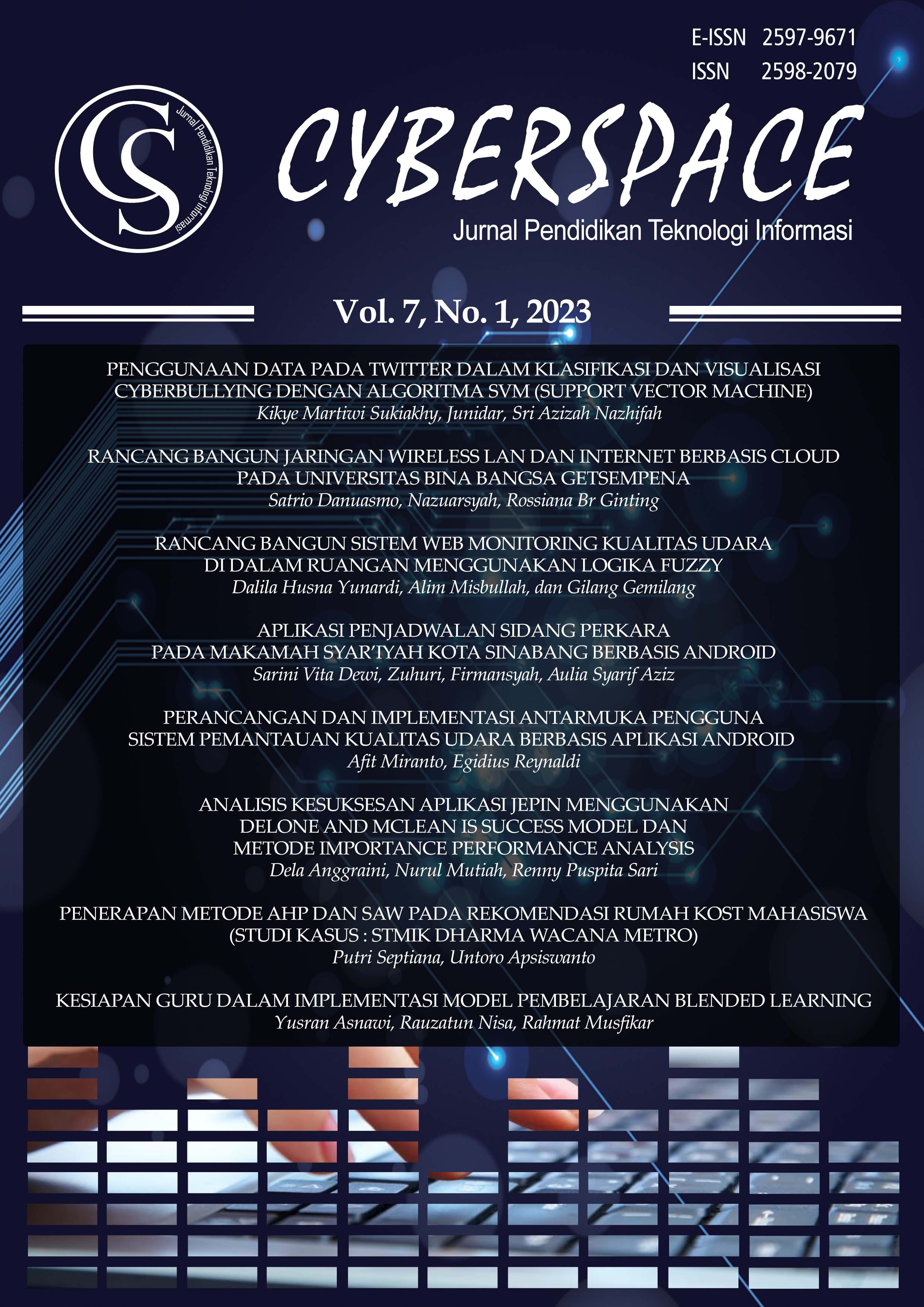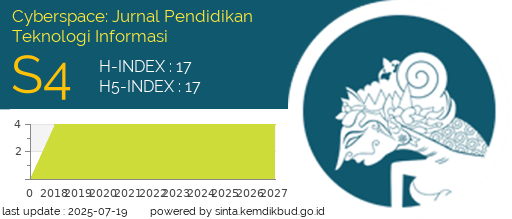RANCANG BANGUN JARINGAN WIRELESS LAN DAN INTERNET BERBASIS CLOUD PADA UNIVERSITAS BINA BANGSA GETSEMPENA
DOI:
https://doi.org/10.22373/cj.v7i1.16865Keywords:
Campus Network, Wireless, LAN, Wi-Fi, ImplementationAbstract
The internet is now a part of our lives. Where to create an infrastructure that requires a design, analysis, and implementation to build a network that has comfort, security, and high reliability. Universitas Bina Bangsa Getsempena (UBBG) requires an internet infrastructure network that can be used for high mobility. UBBG builds a network in stages, which emphasizes the level of need for the academic community. In designing this network, it is determined the budget plan provided by the University regarding infrastructure development in the campus environment. In the first phase of this design, the focus is on Wireless Fidelity (Wi-Fi) access, internet access in laboratories, and University Local Area Network (LAN) networks. The results of this study are the effectiveness of network use, the number of connected clients, and the amount of traffic usage
References
S. Zheng, Z. Li, and B. Li, “Campus Network Security Defense Strategy,” 2017.
M. Nadir Bin Ali, M. Emran Hossain, and M. Masud Parvez, “Design and Implementation of a Secure Campus Network,” 2008. [Online]. Available: www.ijetae.com
“What is a LAN? Local Area Network - Cisco.” https://www.cisco.com/c/en/us/products/switches/what-is-a-lan-local-area-network.html (accessed Jan. 11, 2023).
“What Is a WAN? Wide-Area Network - Cisco.” https://www.cisco.com/c/en/us/products/switches/what-is-a-wan-wide-area-network.html (accessed Jan. 11, 2023).
“What Is Wi-Fi? - Definition and Types - Cisco.” https://www.cisco.com/c/en/us/products/wireless/what-is-wifi.html#~q-a (accessed Jan. 17, 2023).
“802.11n Definition.” https://techterms.com/definition/80211n (accessed Jan. 17, 2023).
“6 Benefits of Using Cloud-Managed Wireless Access Points for Your Business.” https://www.ray.life/blog/6-benefits-of-using-cloud-managed-wireless-access-points-for-your-business/ (accessed Jan. 17, 2023).
C. Del-Valle-Soto, L. J. Valdivia, R. Velázquez, L. Rizo-Dominguez, and J. C. López-Pimentel, “Smart campus: An experimental performance comparison of collaborative and cooperative schemes for wireless sensor network,” Energies (Basel), vol. 12, no. 16, Aug. 2019, doi: 10.3390/en12163135.
L. Hernandez et al., “Optimization of a Wifi wireless network that maximizes the level of satisfaction of users and allows the use of new technological trends in higher education institutions,” in Lecture Notes in Computer Science (including subseries Lecture Notes in Artificial Intelligence and Lecture Notes in Bioinformatics), 2019, vol. 11587 LNCS, pp. 144–160. doi: 10.1007/978-3-030-21935-2_12.
IEEE Staff and IEEE Staff, 2011 International Green Computing Conference and Workshops.
I. P. Mohottige, T. Sutjarittham, N. Raju, H. H. Gharakheili, and V. Sivaraman, Role of Campus WiFi Infrastructure for Occupancy Monitoring in a Large University.
A. Syarif Aziz et al., “Perancangan Dan Analisis Keamanan Pada Sistem Autentikasi Terpusat Freeradius Design And Security Analysis On Freeradius Centralized Authentication System,” Journal of Informatics and Computer Science, vol. 7, no. 2, 2021, [Online]. Available: http://www.mikrotik.com.
Downloads
Additional Files
Published
Issue
Section
License
Authors who publish with Cyberspace Journal agree to the following terms:
- Authors retain copyright and grant the journal right of first publication with the work simultaneously licensed under a Creative Commons Attribution License that allows others to share the work with an acknowledgement of the work's authorship and initial publication in this journal.
- Authors are able to enter into separate, additional contractual arrangements for the non-exclusive distribution of the journal's published version of the work (e.g., post it to an institutional repository or publish it in a book), with an acknowledgement of its initial publication in this journal.
- Authors are permitted and encouraged to post their work online (e.g., in institutional repositories or on their website) prior to and during the submission process, as it can lead to productive exchanges, as well as earlier and greater citation of published work (See The Effect of Open Access).



















